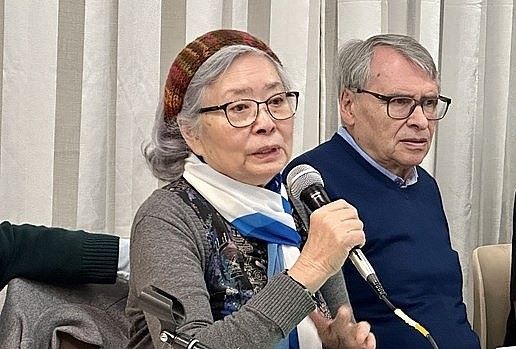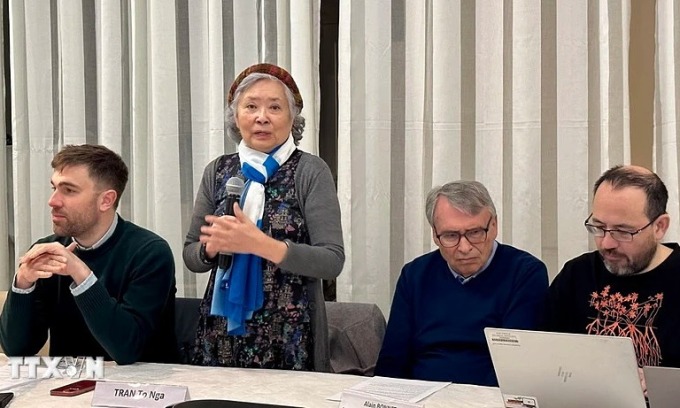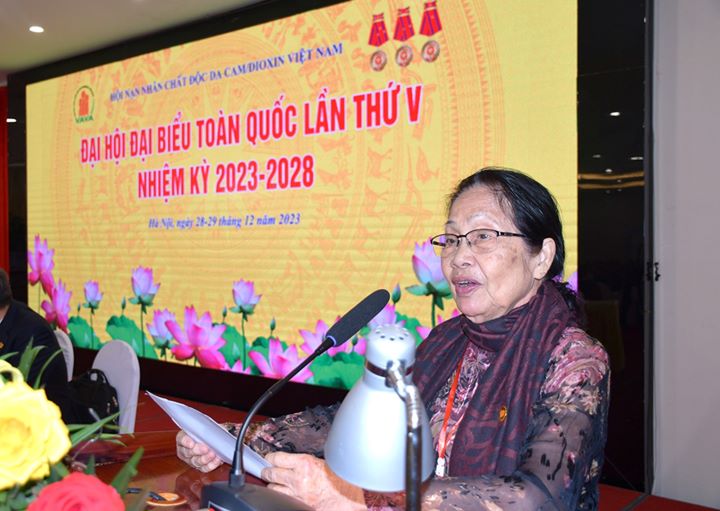Back in history
In the early 1930s, agricultural chemical research showed that many synthetic chemicals could regulate or inhibit the growth of plants and grass. These substances were supposed to help farmers kill weeds effectively, but many also appreciate their potential for military use. The most effective herbicide known is 2,4-dichlorophenoxy acetic acid (2,4-D). The United States has researched the use of herbicides for military purposes since the 1940s. In 1943, Professor E. J. Kraus - Dean of the Botanic Faculty at the University of Chicago signed a contract with the US military to study the harmful effects of 2,4,5-trichlorophenoxyacetic acid (2,4,5-T) on rice plant. By 1944, this research project was moved to the US Military's Chemical Warfare Research Center at Fort Detrick, Maryland. There, they researched over 1,000 substances capable of destroying food crops and over 12,000 substances capable of causing defoliation, of which over 700 substances were usable. At the end of World War II, the US Air Force planned to use a number of herbicides to destroy large rice fields on the outskirts of 6 major cities of Japan, namely: Tokyo, Yokohama, Nagoya, Osaka, Kyoto, and Kobe. But the war had ended before the plan was deployed.
The DoD's Advanced Research Project Agency's (ARPA) Agile Project has succeeded in developing herbicides as a military weapon, an idea suggested by British experts who successfully used 2,4,5-T to destroy the food sources of rebels in Malaysia. ARPA sponsored trials of herbicide combinations and concentrations, and studies to determine the dosage used in spraying systems to achieve the desired density of 28 liters/ha (3 gallons/acre), and tests on optimal conditions (mist-droplet size; wind speed, altitude and spray flight speed). ARPA also developed a village assessment system to collect survey data to estimate the number of people exposed to chemical levels.
The characteristics of the herbicides 2,4-D and 2,4,5-T as weapons discovered in US military research during World War II.
Military scientists at the Edgewood Arsenal laboratory evaluated 2,3,7,8-tetrachlorodibenzo-p-dioxin as a potential chemical warfare agent. In 1957, they heard of an outbreak of chloracne disease in several German chemical plants that produced 2,4,5-trichlorophenol (TCB), the main raw material used in the production of 2,4, 5-T and read an article by Kimming and Schultz that identified that only small amounts of dioxin can cause occupational injuries to workers.
During the 1950s and early 1960s, military tests of herbicides were conducted in Florida, California, Indiana, Kentucky, Kansas, Montana, Maryland, North Dakota, Utha, Rhode Island, Texas, Washington and New York. Most of the tests were targeted at crops. In 1959, at Camp Drum, New York, 1,035 hectares of sugar maples and other hardwood trees were sprayed in a test to evaluate the effectiveness of defoliants. In the early of 1969, 2,4-D and 2,4,5-T were used to defoliate, while cacodylic acid was used to destroy crops.
Additionally, herbicide testing was also conducted in Canada, Korea, Puerto Rico, India and Thailand.
In the early 60s of the 20th century, the United States Government conducted experiments on many types of herbicide chemicals, including 2,4-D and 2,4,5-T, to determine their specific components for use in Southeast Asia. The first person who proposed to put 2,4,5-T into use in Vietnam was Dr. J.W. Brown. The man who passed Brown's petition was Dr. Charles Manirik - Head of the Crop Division at Fort Detrick. Testing of derivatives of 2,4-D and 2,4,5-T (butyleste, isobutyleste and iscooctyleste) was urgently promoted for the following purposes:
1. Choosing herbicides for military purposes as plant killers (weed killer, anti-plant or phytotoxic agents);
2. Researching the harmful effects caused to each type of food crop and timber tree;
3. Researching the density (dose) of use (number of gallons of herbicide per area), defoliation time;
4. Researching optimal conditions: temperature, air humidity, wind speed, altitude and aircraft speed when spraying herbicides.
In 1959, the Fort Detrick Chemical Warfare Research Center held a large-scale exercise at Fort Drum, New York on an area of 4 square miles. The US Department of Defense quickly recognized the success of the exercise and decided to use anti-plant chemicals in South Vietnam within the framework of the "Program on the use of herbicides in the South East Asia". Then, Senior Colonel J.W. Brown - Head of the above-mentioned research program conducted 18 herbicide sprays in Texas, Hawaii, Puerto Rico and Thailand (near Pran Buri). The results of research in the laboratory, in the field and in war made President John F. Kennedy accept the recommendations of the Departments of Defense and the Department of State – which co-drafted the so-called Operation Hades (Death campaign), later known as Operation Ranch Hand to clear and destroy crops as recorded in official documents of the government of the Republic of Vietnam.
In 1960
The Minister of Foreign Affairs of the Republic of Vietnam (RVN - Former Saigon Government) informed the United Nations Security Council that: The Army of the Republic of Vietnam had used chemicals for defoliation purposes in some tropical jungle areas in South Vietnam since 1960
June 7, 1960.
"Plant eradication work".
The General Staff of the Armed Forces of the Republic of Vietnam issued a Directive on "Plant eradication work", specifying that:
1. Recommending the way for deforestation is by chemicals (to distinguish from clearing by pruning branches, cutting down trees around the base or clearing with heavy bulldozers along both sides of provincial roads and arterial highways);
2. The dossier requesting deforestation clearly states the reason for defoliation, clearly states the coordinates of the target and the map of those targets;
3. Intelligence supplement;
4. Supplement on psychological warfare and civil affairs;
5. Commitment to compensate for damages, if any.
Establishment of the Committee for Combat Capabilities Development.
Also on this day, the General Staff of the Armed Forces of the Republic of Vietnam issued a decision to establish the Committee for Combat Capabilities Development. Later on December 30, 1962, it was changed to the Center for Implementing and Developing Combat Capabilities (The Combat Development and Test Center for Creation of New Techniques). The Center's tasks include: estimating, receiving, managing, supplying chemicals and several types of herbicide spraying vehicles such as hand sprayers; Buffalo Turbine chemical sprayer installed on armored vehicles, trucks, trains or boats; the 38-ton heavy optical bulldozer (Plow Rome) for Tactical Zones (TZ), Tactical Region (TR), Sub-zones (SZ), Corps, and Division.
Buffalo Tirbine installed on a herbicide spraying truck on rice fields
8 C-123 aircraft were descending before approaching the target
Rome Plow is clearing trees on both sides of Highway 15
Rome Plow bulldozer fitted with a plow
The preliminary planning conference convened on August 15, 1960 in Langley to discuss the supply of the C.123 aircraft with the presence of representatives of the Tactical Air Force Command (TAC), Army, Navy and the US Department of Agriculture. Captain Carl W. Marshall - officer in charge of the Special Aerial Spray Flight - SASF, who then commanded the Ranch Hand unit, chaired the meeting. The captain proposed the renovation of the C.123 aircraft so that it can conduct the spray of insecticides



_thumb_720.jpg)








_thumb_720.jpg)



















Comment